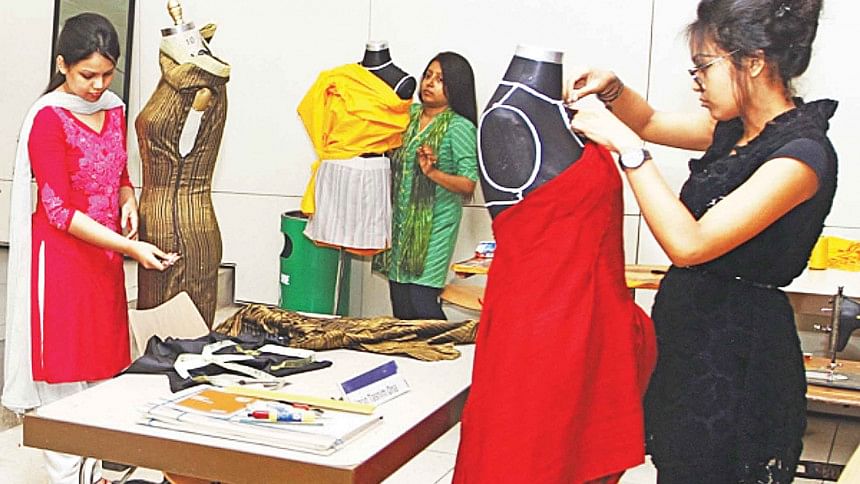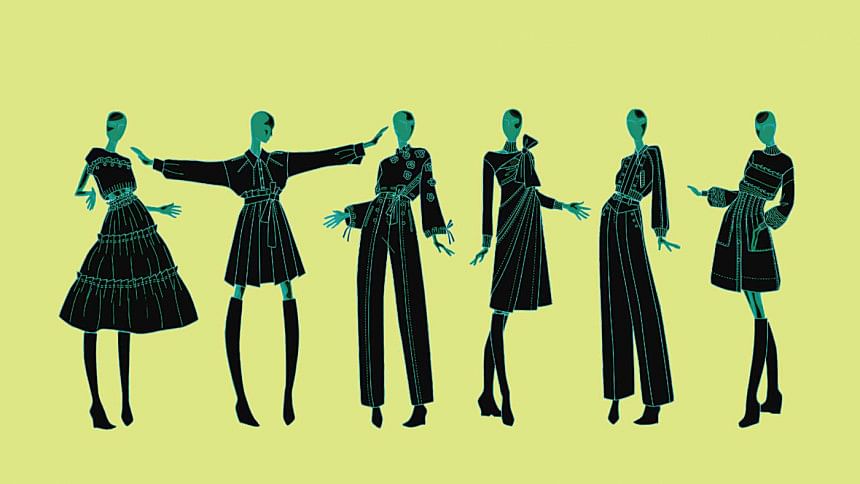A Guide to Fashion Schools

I distinctly remember the day I confidently expressed my dreams of becoming a fashion designer to a relative, who then blessed my aspirations with evil remarks. Looking back, I believe that I gave in to her reaction because I was terrified. Should you choose to exhibit your creations to all of the world's eyes, you will be judged. For the longest time, receiving a chance to work and succeed in the fashion industry had been nothing short of an uphill battle on a very slippery mountain. Now, modern media has changed all of that.
Over the past few decades, we've observed changes in every aspect of fashion. From the way companies are run, to the way products are advertised to the clothes itself. This, along with the number of growing companies and the new-found ease of setting up your own stores, attracts more and more prospective fashion students every year.
If you too are looking at your options and considering a life in fashion, let this be your guide on the more conventional route to the world of glitz and glam: fashion schools.
WHAT DO FASHION SCHOOLS OFFER?
The most common fashion school major is "design". The design track itself is spread out into smaller branches. In fact, did you know that some schools offer fashion design majors for menswear and womenswear differently? Furthermore, there are sectors for accessory design, shoe design, knitwear design, pattern making and print. Each track will ensure that you know all the materials, styles and manufacturing techniques by heart. Schools also have classes and courses to help you realise your own style.
Farah Anjum Bari, Managing Director of Fashion Institute of Designing Ltd (FID), shares her experience entering the world of fashion design, "I had been designing for several national platforms but I completed a diploma in fashion design because I wanted to establish a fashion school in Dhaka, which were very few in our city at the time. I also wanted to learn about the more technical aspects like draping and pattern making."
Granted, fashion schools are largely known for their fashion design programs, but that's just the tip of the iceberg. The fashion industry is ginormous and you do not necessarily have to stay limited to the design or manufacturing of products to be a part of it. With the diverse range of jobs that are available, as long as you have a passion for fashion, you could mix it with your other interests and still end up with a viable career. Prefer pictures to words? Behold, fashion photography. Like the more corporate side of fashion better? There's fashion business management or marketing. Add to the list sustainability, fashion activism, and many many more.
Raisa Rafique, 17, is pursuing her associate's degree in Fashion Business Management at the Fashion Institute of Technology (FIT) in New York. Raisa says, "I do not only want to become a fashion designer. I also want to turn my brand, Raiue, into the first-ever haute fashion house founded by a Bangladeshi. To do that, I need to have business skills, more specifically fashion business management skills."
SHOULD YOU APPLY?
Are you passionate about artistic expression and creation? Do you find yourself devoting a significant amount of time on your craft? Do you want to expand your horizons and truly learn this trade? If yes, then that is all the reason you need.
For Raisa, the realisation that she wanted to attend fashion school came slowly, "Fabric, colours and creation felt like home to me, FIT put a roof over that home and showered me with the guidance I need. That's when I realised that this was the place I have been looking for all my life."
Farah Anjum Bari comments, "I believe creativity cannot be taught, that comes from within. But enrolling in a program teaches one the technical aspects such as basic elements of design, history of fashion, fashion trends and forecasting, marketing and merchandising, and how to make a portfolio. Programs also offer you hands-on training and internship opportunities."
"Each student is different," she continues. "Some are impatient – they're not as passionate about the field, and think that fashion designing can be an easy or back up option. But it isn't just about glamour, it takes a lot of study, time, and hard work to do well in this field. When you are a designer, you are constantly being judged by others. You have to create something that is both functional and marketable. From sample development to marketing, financing, branding, a lot of things come into play. But those who are passionate – some who are so young and have such amazing, innovative ideas, surprise us."

CAREER PROSPECTS
Fashion schools play an invaluable role in connecting students to internships and jobs. Many schools will offer internships at famous companies, for example, at FIT, students get the opportunity to intern at Ralph Lauren, Guess, JCPenney, Saks and the like. These internships not only grant credit and offer necessary job experience but often end in a full-time job.
Raisa states, "In today's day and age, I would say that it's much easier to get jobs as a fashion graduate compared to even a few years ago. Fashion houses are constantly looking for fresh ideas and faces, people are more open to experimentation and less stern about sticking to traditional natures of clothing, fashion, merchandising and marketing. Fashion designers in particular are even luckier when it comes to job opportunities. Without a retirement age, you can keep designing till you are 90."
Job opportunities in Bangladesh look good too, as Farah Anjum Bari informs, "Most graduates of FID have either joined as senior designers at design studios of garment factories, or working with fashion houses like Aarong. Those who focus on fashion merchandising work at buying houses, and others have started their own brands."
APPLICATION PROCESS
BGMEA University of Fashion & Technology will require you to send in a primary application before taking an admission test. The test is followed by an interview. And Shanto-Mariam University of Creative Technology requires you to send in your transcripts for a preliminary round.
Most schools abroad will require you to submit a portfolio for consideration and/or your CV for design majors. Some schools also have supplemental questions, essays or challenges. Admissions officers use these materials to evaluate your creative genius and conclude whether you're truly a fit for their school and your intended major. Remember that your portfolio plays a large role in your acceptance, so make sure you use it to express your personality and style candidly.
The writer just discovered that, when she's asleep, her cat whispers her most embarrassing moments into her ear hoping to elicit nightmares. Shoot her an email at [email protected] to offer moral support in her time of cry-sis.

 For all latest news, follow The Daily Star's Google News channel.
For all latest news, follow The Daily Star's Google News channel. 



Comments